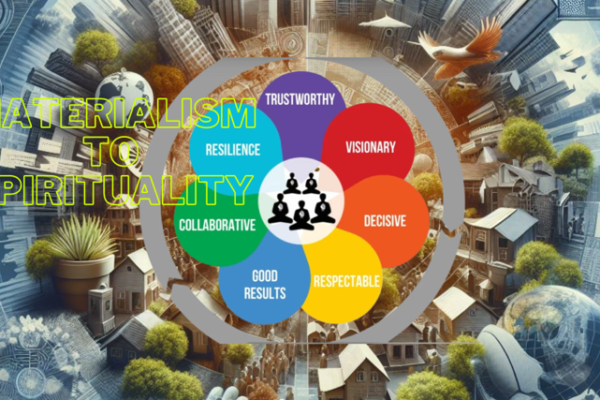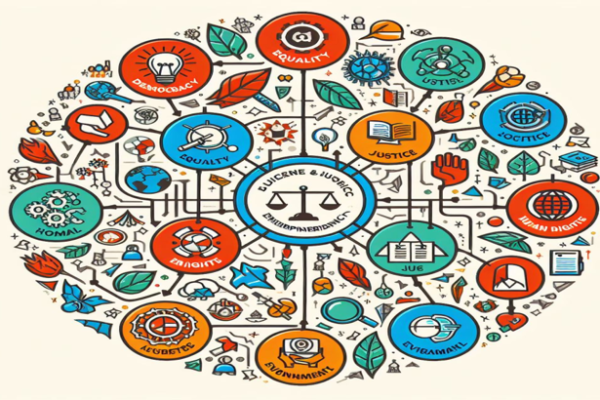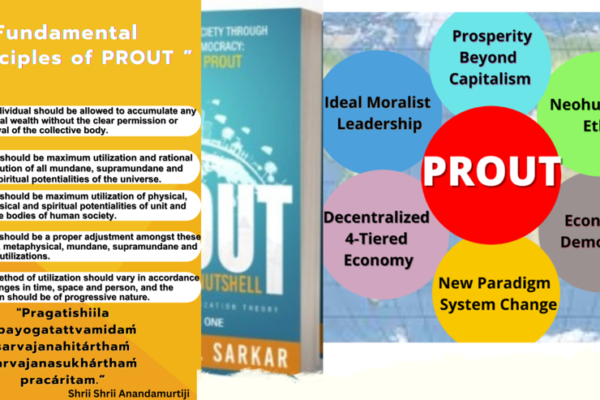– Dr. Hans-Joachim Rudolph & Ac. Vimalananda Avadhuta Microvita Research e.V.
The idea that not only the cosmos as a whole, but also each of its parts must be endowed with consciousness is not new. Rather, it gained remarkable prominence 350 to 500 years ago, particularly among Italian theologians and philosophers. Unluckily, they were neither supported by the Catholic Church, nor by the proponents of the upcoming natural sciences. Consequently, they were sandwiched between the advocates of Scholasticism and the torchbearers of the objectivist and mechanistic worldview that followed.
Their names are Giovanni Pico della Mirandola (1463-1494), Girolamo Cardano (1501-1576), Bernardino Telesio (1509-1588), Francesco Patrizi (1529-1597), Giordano Bruno (1548-1600), and Tommaso Campanella (1568-1639).
So, Pico writes in his Conclusiones: “Nothing in the world is devoid of life. … Wherever there is life, there is soul; wherever there is soul, there is mind.” Cardano, on the other hand, says: “All things have soul, but only the higher forms – such as humans – have minds.” Telesio also conveys that a primordial sense of “being affected” pervades the entire universe. This sensus is necessarily self-awareness, “and accordingly nature is conscious nature.” Here, the question arises as to whether the individual objects of the world possess souls in themselves, or whether they are merely extensions of the one world-soul. In that respect, Patrizi opts for the pluralist view. He sees soul as a manifold entity, present both as distinct individuals and as united in the comprehended world-soul. Likewise Bruno: He takes the Aristotelian orthodoxy, according to which nature has two internal constituent principles – form and matter – but interprets them in a Platonic or Plotinian manner. In particular, he considers form as produced by soul. “Bruno asserts that … every form is produced by a soul. For all things are animated by the world-soul, and all matter is everywhere permeated by soul and spirit“ (P. Kristeller, Eight Philosophers of the Italian Renaissance. Stanford University Press, 1964). Finally Campanella: He argues that, because all things sense, they can be said to know, and consequently to possess a kind of wisdom. First and foremost, things know themselves. Each thing knows of its own existence and its own persistence over time: “All things have the sensation of their own being and their own conservation” (1).
So, when we say that viruses may very well be conscious, we refer not only to the late Indian philosopher and social reformer P.R. Sarkar, but also to the great philosophers of Italian Renaissance. Admittedly, they didn’t become mainstream thinkers in their days; Bruno was burnt at the stake for his ideas and Campanella had to serve for his beliefs 27 years in prison. But they are cherished nowadays, and in case of Bruno, his death sentence was commuted with regret by the Catholic authorities (1).
After all, this line of thinking maintains the Non-Emergence Argument, which says that soul cannot arise from no-soul, and hence soul must have been present at the very origin of things. Campanella, for example, argues that “like comes from like,” that is, that emergence is impossible:
“Now, if the animals are sentient…and sense does not come from nothing, the elements whereby they and everything else are brought into being must be said to be sentient, because what the result has the cause must have.“
As opposed to this, modern theories of consciousness are generally based on the Emergence Argument: Novel holistic properties arise in complex systems, created by interactions at smaller scales. Various levels of life emerge from multiple lower levels. At each level of complexity, entirely new properties appear. These emergent properties can then act down on the lower levels, which means that life depends critically on both top-down and bottom-up interactions across spatial scales (2).
Apart from such vertical (bottom-up/top-down) interactions, horizontal interconnectedness has been demonstrated among neuronal assemblies, creating networks that are believed to give rise to consciousness, as soon as a certain level of complexity is reached (3). This approach is applied in Integrated Information Theory (IIT), allowing models of interconnectedness that develop higher numbers of evolved concepts and “integrated conceptual information“ (“big Phi”). An example can be seen at
URL = http://integratedinformationtheory.org/animats.html.
In addition to that, we have discussed discrete oscillations between subjective and objective states. As opposed to the aforesaid, these can be called “lateral“ interactions, commemorating Carl Friedrich Gauß‘ suggestion, who wrote in 1831: “Had the units +1, –1, √-1 not been called positive, negative, imaginary (or even impossible), but rather direct, inverse, and lateral, it would have hardly been possible to speak about their obscurity“ (4).
In summary, horizontal, vertical and lateral interconnectedness do not exclude each other, rather the Emergence and Non-Emergence Argument allows for a third one (tertium datur), which amounts, at higher levels of integrated information, to what we may call a complete ensemble of consciousness, finding fullest expression in human beings.
References[Text Wrapping Break]
- Skrbina, D.: Panpsychism in the West. MIT Press, Cambridge/Massachusetts (2017)
- Nunez, P.L.: Complexity, Physics, and the Emergence of Consciousness.[Text Wrapping Break]Psychology Today (2019)
- Albantakis, L., Hintze, A., Koch, C., Adami, C., Tononi, G.: Evolution of Integrated Causal Structures in Animats Exposed to Environments of Increasing Complexity. PLoS Comput Biol (2014)
- Finck, P.J.E.: System der niedern und höhern Algebra, zum Gebrauch für höhere polytechnische Lehranstalten. Leipzig (1841)





